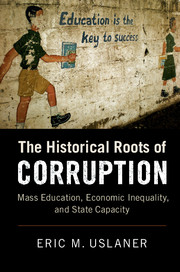Book contents
- The Historical Roots of Corruption
- The Historical Roots of Corruption
- Copyright page
- Contents
- Figures
- Tables
- Preface
- 1 The Theoretical Framework
- 2 The Quantitative Evidence
- 3 Education in Developed Europe
- 4 Education Beyond Developed Europe
- 5 The United States and Other “New” Anglo-American Countries
- 6 Is Path Dependence Forever?
- Appendix
- References
- Index
- References
References
Published online by Cambridge University Press: 21 September 2017
- The Historical Roots of Corruption
- The Historical Roots of Corruption
- Copyright page
- Contents
- Figures
- Tables
- Preface
- 1 The Theoretical Framework
- 2 The Quantitative Evidence
- 3 Education in Developed Europe
- 4 Education Beyond Developed Europe
- 5 The United States and Other “New” Anglo-American Countries
- 6 Is Path Dependence Forever?
- Appendix
- References
- Index
- References
- Type
- Chapter
- Information
- The Historical Roots of CorruptionMass Education, Economic Inequality, and State Capacity, pp. 164 - 166Publisher: Cambridge University PressPrint publication year: 2017



